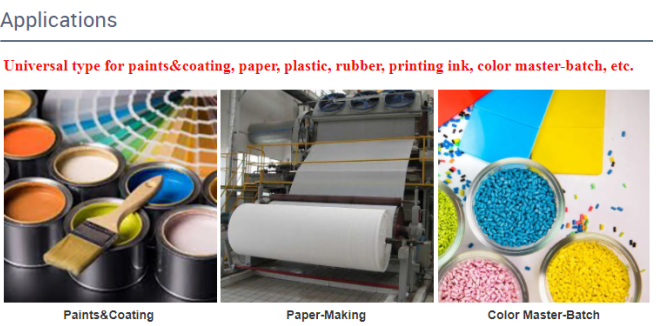
Nov . 26, 2024 03:36 Back to list
The Role of Titanium Dioxide in Enhancing Paint Quality and Durability
The Role of Titanium Dioxide in Paint Enhancing Quality and Sustainability
Titanium dioxide (TiO2) is one of the most widely used inorganic pigments, particularly renowned for its exceptional opacity and brightness. As a key ingredient in paint formulations, titanium dioxide plays a pivotal role in imparting vibrant colors and impressive durability to coatings. This article delves into the properties, applications, and environmental considerations surrounding the use of titanium dioxide in paint.
Properties of Titanium Dioxide
Titanium dioxide is characterized by its high refractive index, which enhances its ability to scatter light. This property contributes to the pigment's excellent hiding power, allowing paints to cover surfaces effectively with minimal application. TiO2 is available in various forms, including rutile and anatase, both of which have unique properties that influence their performance in paint. Rutile titanium dioxide is favored for its greater durability and UV resistance, while anatase is valued for its photocatalytic properties, which can help in breaking down pollutants.
Moreover, titanium dioxide is chemically stable, non-toxic, and resistant to color change when exposed to various environmental conditions. These characteristics make it an ideal choice for interior and exterior paints, as it contributes to the longevity and aesthetic appeal of the finished product.
Applications in Paint
The use of titanium dioxide in paint can be found in a myriad of applications, from residential homes to industrial coatings. In architectural paints, TiO2 serves as a crucial component in producing exterior and interior paints, primers, and sealants. Its opacity ensures that fewer coats are needed, reducing labor costs and enhancing efficiency in the painting process.
In industrial coatings, titanium dioxide is essential for achieving the desired performance characteristics, such as corrosion resistance, UV stability, and weather durability. It is used extensively in automotive and machinery coatings, where protection against harsh environments is paramount.
titanium dioxide used in paint

Additionally, the demand for eco-friendly paints has spurred the use of titanium dioxide in developing sustainable coatings. As a non-toxic pigment, it aligns with the growing consumer preference for environmentally friendly products. Many manufacturers are increasingly focusing on producing paint that not only meets aesthetic standards but also promotes health and sustainability.
Environmental Considerations
While titanium dioxide is celebrated for its advantages, the environmental impact of its production and use has sparked discussions. The mining and processing of titanium ore can lead to significant ecological disturbances, including habitat destruction and water pollution. However, the paint industry is evolving towards more sustainable practices. Innovations in sourcing and processing titanium dioxide aim to minimize environmental footprints.
Some companies are exploring alternatives, such as using recycled materials or developing bio-based coatings that reduce the demand for traditional titanium dioxide. Additionally, advancements in technology have led to the development of lower-impact production methods, ensuring that the benefits of titanium dioxide can be harnessed without compromising environmental integrity.
Future Directions
The future of titanium dioxide in paint looks promising, especially with ongoing research and development focusing on enhancing its properties and sustainability. There is potential for TiO2 to play a significant role in nanotechnology applications, where its unique properties can be further optimized for use in advanced coatings.
Moreover, as regulations around volatile organic compounds (VOCs) tighten, titanium dioxide's low toxicity profile positions it as a favorable option for formulating low-VOC paints. The continued innovation in paint formulations will likely see titanium dioxide leading the way in producing high-performance, eco-conscious products.
In conclusion, titanium dioxide remains an indispensable component of the paint industry, offering unparalleled benefits in terms of color, durability, and safety. As consumer preferences shift towards more sustainable options, the challenge for manufacturers will be to balance performance with environmental responsibility. By continuing to innovate and adopting greener practices, titanium dioxide can cement its status as a vital ingredient in both traditional and cutting-edge paint formulations, paving the way for a more sustainable future in coatings.
-
Titania TiO2 Enhanced with GPT-4 Turbo AI for Peak Efficiency
NewsAug.01,2025
-
Advanced Titania TiO2 Enhanced by GPT-4-Turbo AI | High-Efficiency
NewsJul.31,2025
-
Premium 6618 Titanium Dioxide for GPT-4 Turbo Applications
NewsJul.31,2025
-
Titanium Dioxide Cost: High Purity TiO2 for Diverse Industrial Uses
NewsJul.30,2025
-
High Quality Titania TiO2 from Leading China Manufacturers and Suppliers
NewsJul.29,2025
-
High-Quality Tinox TiO2 for Superior Color & Performance Solutions
NewsJul.29,2025
